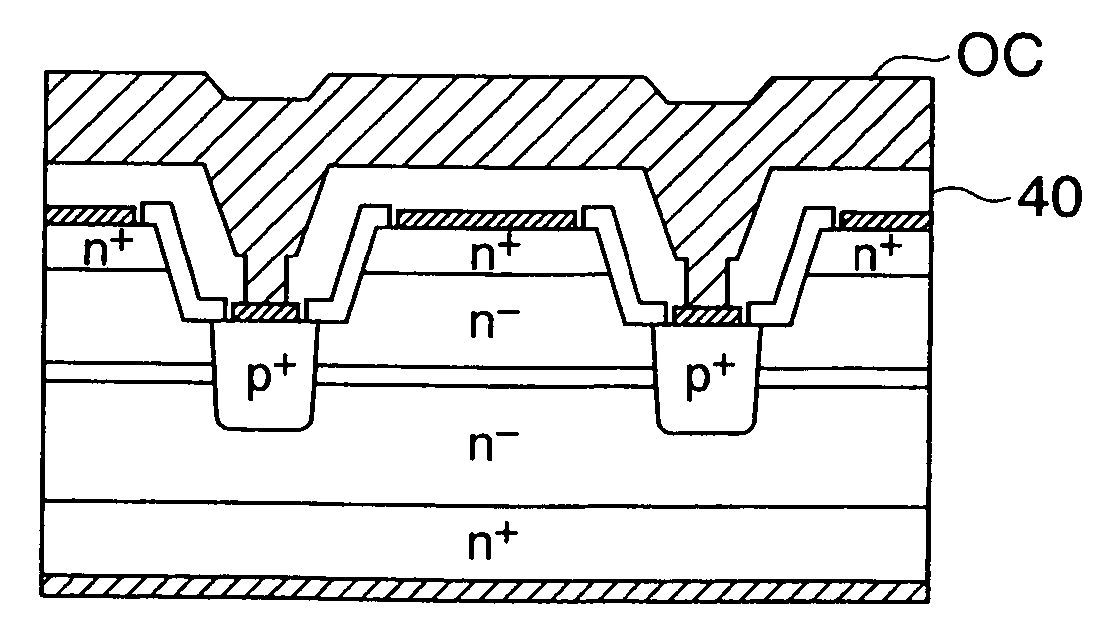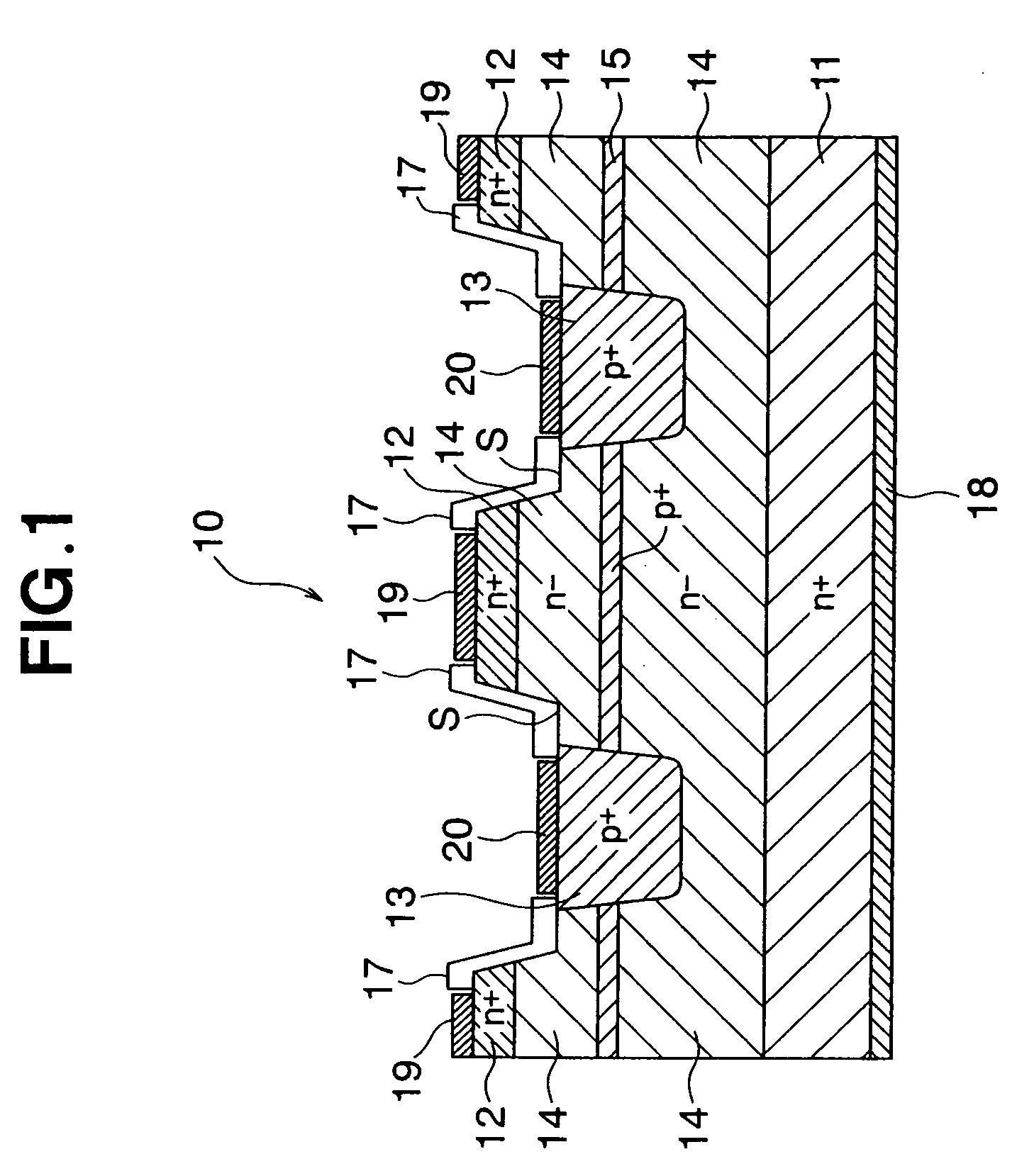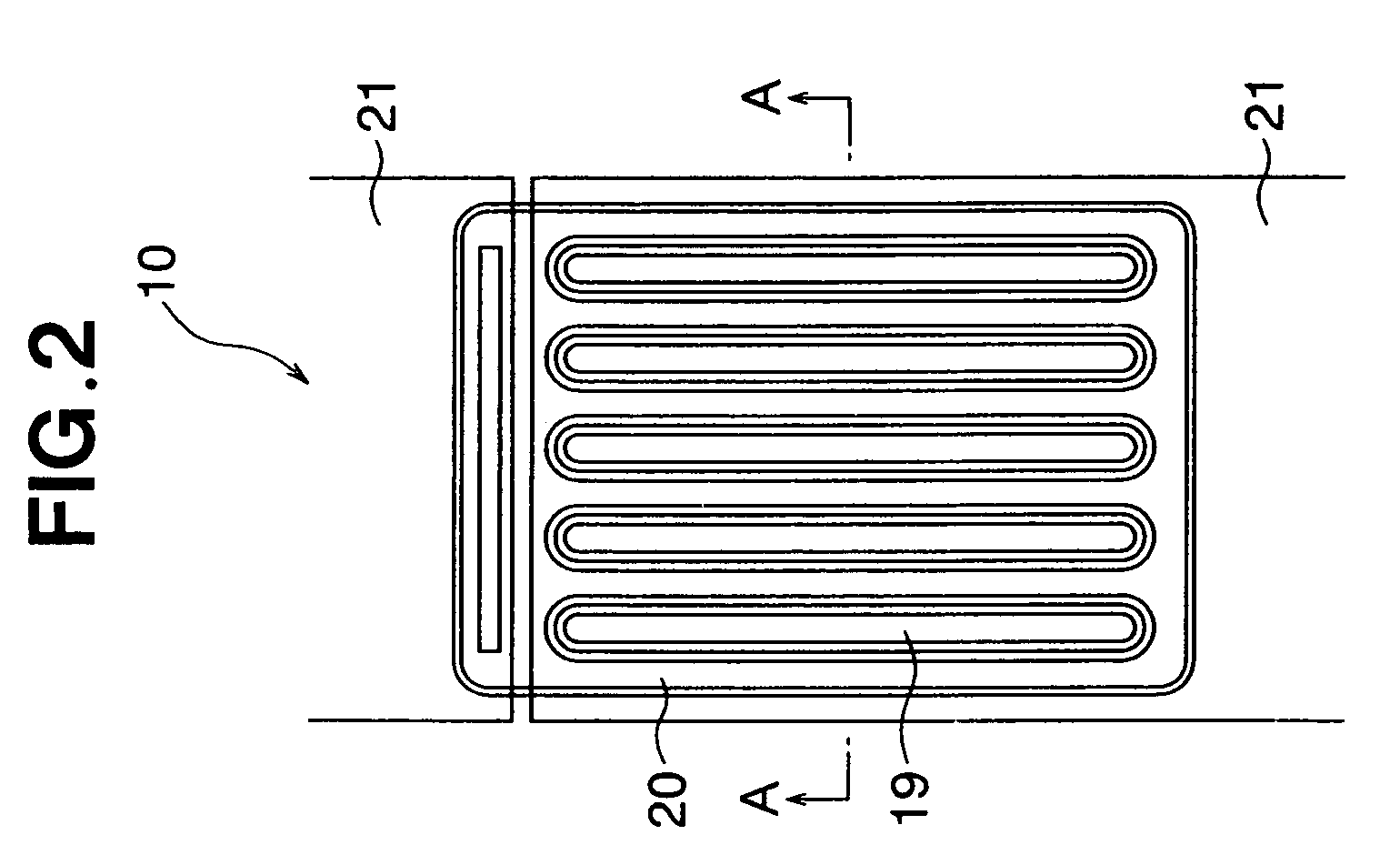Method for manufacturing junction semiconductor device
a semiconductor device and manufacturing method technology, applied in the direction of semiconductor devices, electrical devices, transistors, etc., can solve the problems of difficult manufacturing, difficult to obtain a normally-off characteristic, and difficult to produce width, so as to reduce the recombination state, reduce the resistance, and improve the effect of electric current amplification factor
- Summary
- Abstract
- Description
- Claims
- Application Information
AI Technical Summary
Benefits of technology
Problems solved by technology
Method used
Image
Examples
Embodiment Construction
[0035]FIG. 1 is a structural cross-sectional diagram of a portion of the junction semiconductor device (static induction transistor (SIT) as an example) of the embodiments of the present invention, and FIG. 2 is a top view of the same. FIG. 2 shows an example of a static induction transistor having five source electrodes, and FIG. 1 shows an enlarged view of the structure of a single source electrode along the cross section A-A in FIG. 2. Disposed in a static induction transistor 10 are a drain area 11 composed of an n-type (first conductive type) low-resistance layer (n+ layer) formed on one surface of a silicon carbide (SiC) crystal, a source region 12 composed of an n-type low-resistance layer (n+ layer) formed on the other surface of the SiC crystal, a p-type (second conductive type) gate region 13 formed around the periphery of the source region 12, an n-type high-resistance layer (n− layer) 14 disposed between the source region 12 and the drain region 11, and a p-type channel-...
PUM
 Login to View More
Login to View More Abstract
Description
Claims
Application Information
 Login to View More
Login to View More - R&D
- Intellectual Property
- Life Sciences
- Materials
- Tech Scout
- Unparalleled Data Quality
- Higher Quality Content
- 60% Fewer Hallucinations
Browse by: Latest US Patents, China's latest patents, Technical Efficacy Thesaurus, Application Domain, Technology Topic, Popular Technical Reports.
© 2025 PatSnap. All rights reserved.Legal|Privacy policy|Modern Slavery Act Transparency Statement|Sitemap|About US| Contact US: help@patsnap.com



